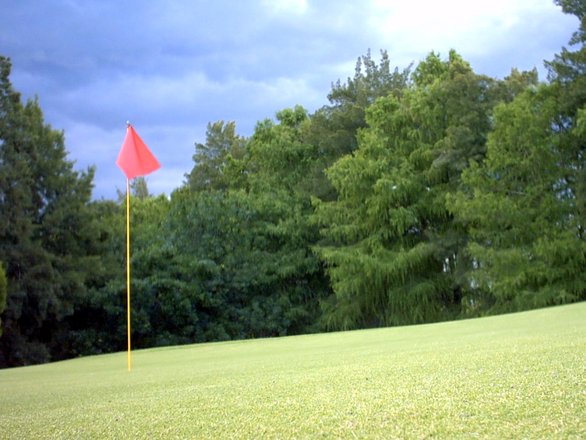
You will use the putter more than any other club in your bag during a round of golf. Unfortunately, greens are rarely completely flat and to make a putt requires good judgment.
Some of the top professional players seem to have a natural ability to read greens well and make what look like impossible putts. However, even those players at the top of the PGA and European Tour work at ways to help them when it comes to reading greens.
Misreading a sloping green can lead to a three-putt and end up being very costly to your final score. So, how can you read sloping greens successfully?
When you look at any putt, the amount of pace you put on the ball will determine whether it travels in a straight line or breaks. So, the speed at which you make the putt will have an impact on the amount of break on the ball.
Think about the speed you are going to hit the ball and imagine the amount of break which will happen because of that speed. If you were to hit the ball straight at the hole, where would the ball be as it traveled beyond the hole? Try and assess the slope on the green as you approach it, in some cases, it will be obvious.
If you find it difficult to tell if the slope of the green is uphill or downhill stand behind the hole while looking at your ball to help you make a judgment.
If the putt is downhill, you will need to hit the ball with less pace than if the green was level. Therefore, this means the ball will break more because you are striking it at a slower speed. When thinking about the line of your putt, you must take into consideration the increased break on the ball.
Uphill putts are usually easier to judge because you can hit them firmer without the worry the ball will travel a long way beyond the hole if you miss it. As you are putting uphill, you must strike the ball with more force than if you were putting on an even green. By hitting the ball harder, it will not respond to the break as much as it will when hitting it slower on the downhill slope. You must take this into consideration when choosing the line of your putt.
If you are faced with a slope which is to the side of the hole, rather than directly up or down, remember that the first part of the putt will be uphill. The second part of the putt will be downhill, as your line will always allow the ball to break towards the hole when faced with a side slope.
A putt on a side slope is one of the most difficult you will face, as the ball starts to travel downhill the closer it gets to the hole. If you are faced with a long putt on a side slope, try and think about the area in which you would like the ball to stop, rather than aiming for the hole.
By doing that, even if you miss the hole, the ball will stop somewhere near and give you an easy second putt.

Recent Comments